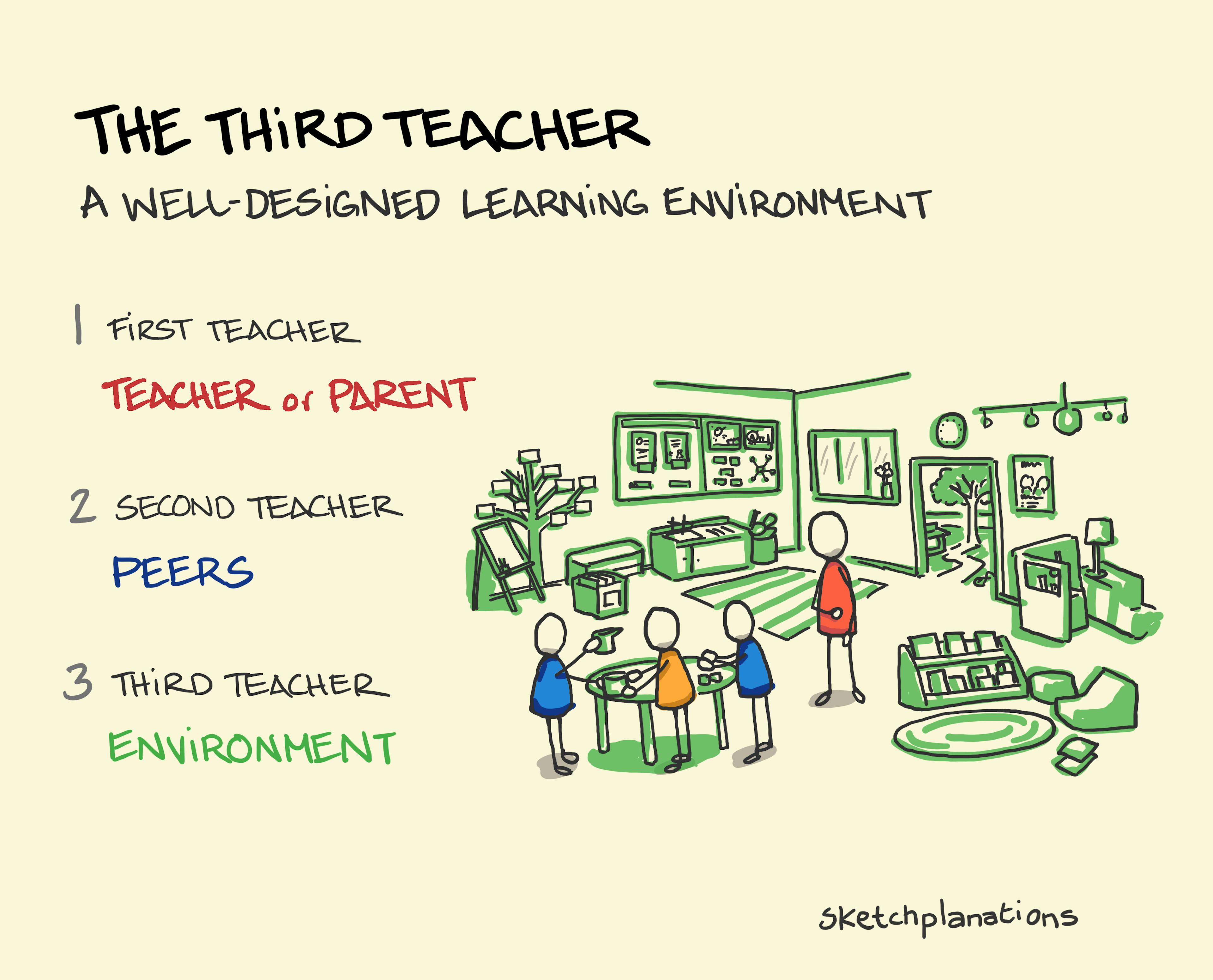The Environment as the Third Teacher in Early Childhood and Beyond

- Prints
- Copied!
👇 Get new sketches each week
I love Reggio Emilia’s concept of the environment as the third teacher. This idea works just as well in early childhood education as it does in a primary school classroom—or even an office. A thoughtfully designed environment can support learning, foster good habits, and boost overall wellbeing.
In Reggio Emilia’s approach:
• The first teacher is the parent or classroom teacher.
• The second teacher is the student’s peers.
• The third teacher is the learning environment itself.
A well-designed classroom can act as the third teacher, shaping behaviour, sparking curiosity, and encouraging exploration.
I once had a mentor who said he could tell how a project was going just by observing the state of the project room—proof that our environments influence more than we realise.
What Makes a Classroom a “Third Teacher”?
To create a classroom that truly acts as a third teacher, consider these key elements:
- Intentional Layout: Arrange furniture and materials to encourage collaboration, independent learning, and creativity. Open, uncluttered spaces can inspire curiosity and reduce overwhelm.
- Visibility and Accessibility: Keep tools, books, and resources at children's eye level. This will help them feel a sense of ownership over their learning.
- Natural Elements: Incorporate light, plants, and natural materials. Studies show these elements can improve focus, reduce stress, and create a warm atmosphere.
- Documentation: Display students’ work on walls to celebrate progress and reinforce learning. This practice, central to Reggio Emilia, makes learning visible and creates pride.
- Zones for Exploration: Create different areas for reading, experimenting, building, or relaxing. Giving children clear zones encourages diverse learning experiences.
Tips for Teachers to Maximise the “Third Teacher”
- Observe and Adapt: Watch how students interact with the environment. Are they using spaces as intended? What sparks their interest? Adjust based on their behaviour.
- Involve Students: Let children help design the space by suggesting ideas or creating artwork. This builds a sense of belonging and ownership.
- Simplify and Rotate Materials: Too much clutter can overwhelm students. Keep materials fresh by rotating resources and ensuring every item has a purpose.
- Focus on Flow: Think about how students move through the room. Avoid bottlenecks or cramped spaces, and make sure there’s room for both quiet reflection and active collaboration.
- Technology as an Extension: In today’s digital world, some aspects of the “environment” live online. Design digital learning spaces with the same care as physical ones—easy navigation, engaging visuals, and clarity of purpose.
Beyond the Classroom
Too often today, our “environments” are hidden in software. Whether you’re designing a physical classroom, an early childhood learning space, or a workspace, consider how your environment could become a third teacher and how you could make the most of it.
This sketch features in my book Big Ideas Little Pictures
Related Ideas to the Third Teacher
Also see:
- The Feynman Learning Technique
- Information radiator
- The Learning Pit
- Goldilocks Tasks
- Bloom's Taxonomy
- Zone of Proximal Development
- Get more participation: ask "What else?"
- Ask the question at talks
I originally made an animated third teacher version

